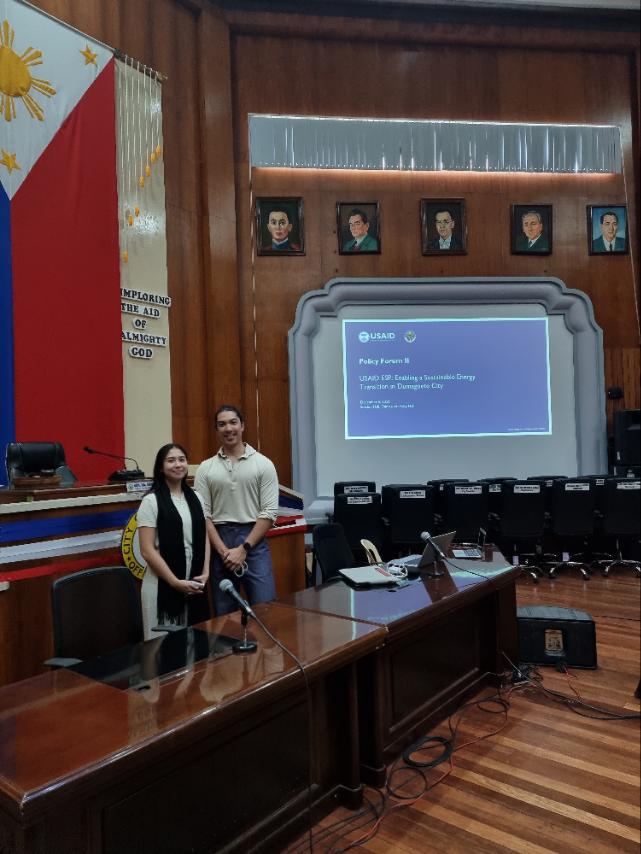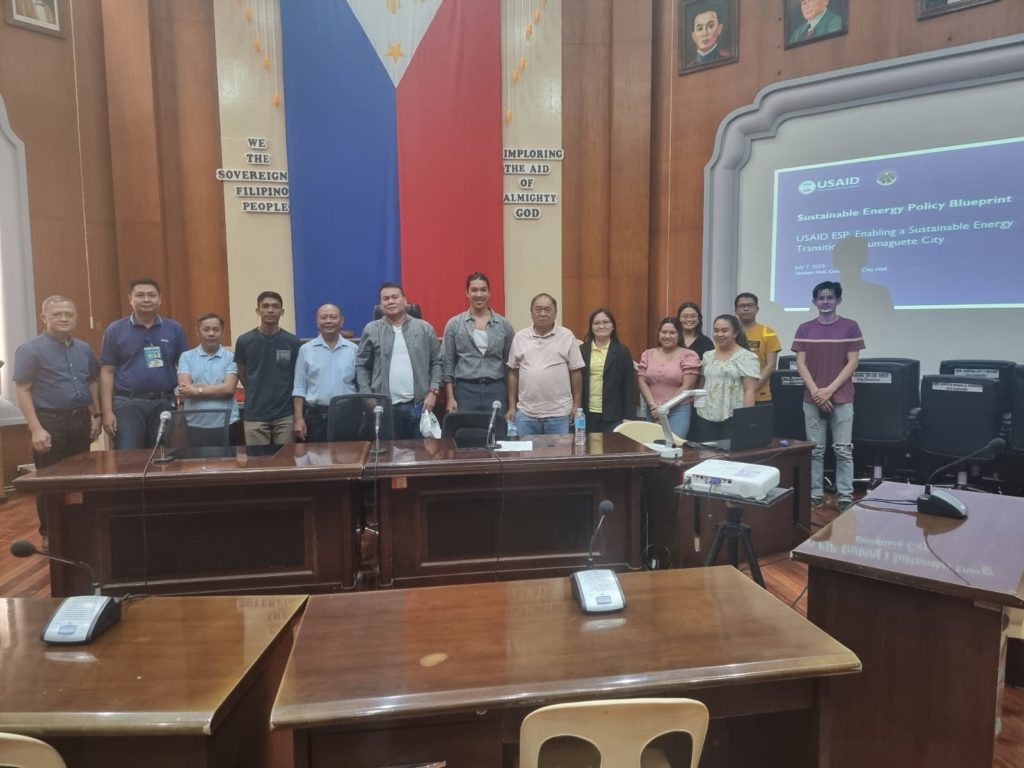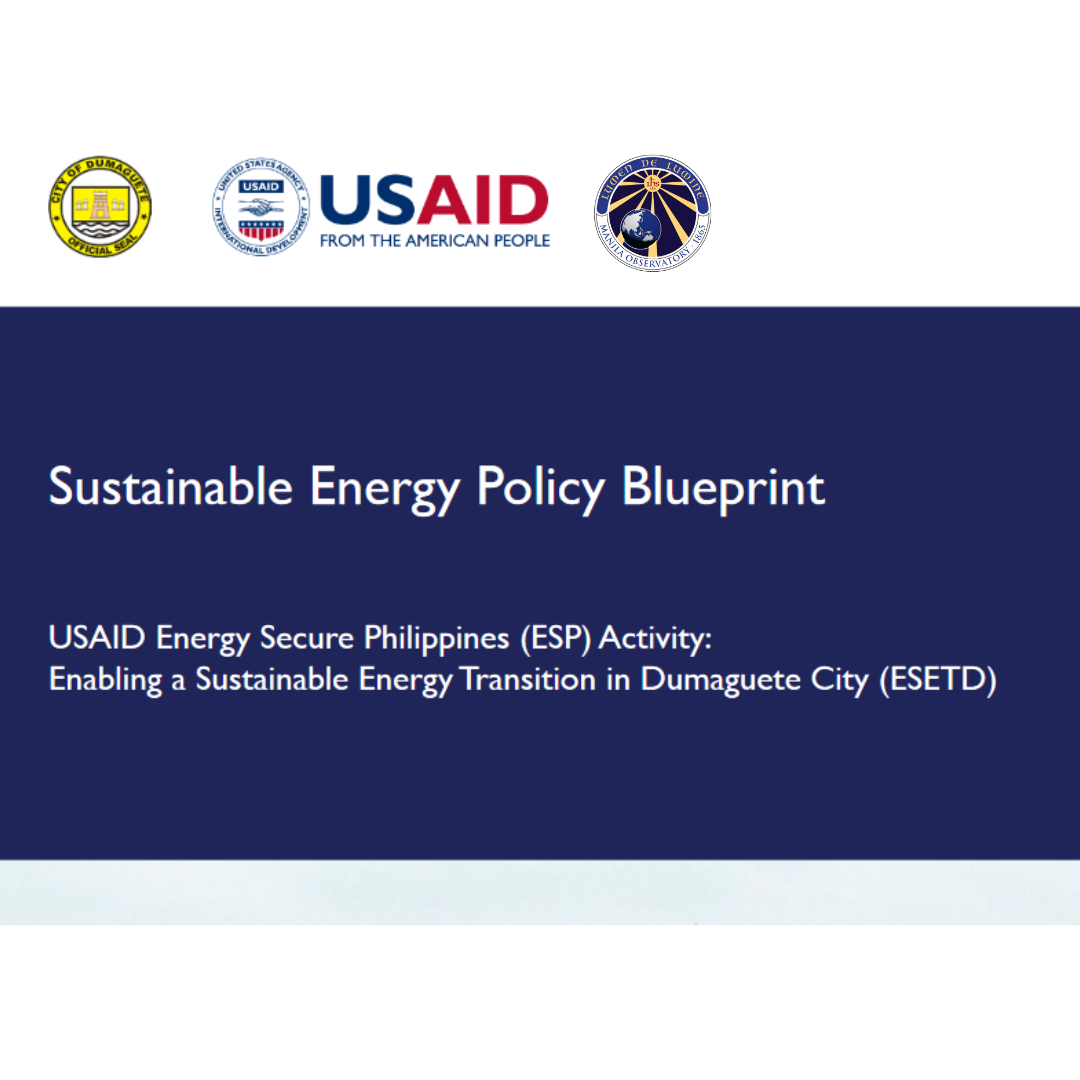This report was authored by John Altomonte, Ruby Descalzo, Hannah Guinto, and Jaime Iñigo (Manila Observatory).
Urban areas house more than half of the world’s population and are responsible for over 70% of energy-related CO 2 emissions worldwide. With cities expanding and their economies growing, these statistics are expected to increase by 2050. Cities and urban regions are thus becoming increasingly important in catalyzing large-scale sustainable transformations.
Increasing climate commitments worldwide have prompted transitions to low-carbon economies. In response to this, United States Agency for International Development – Energy Secure Philippines Activity is supporting Manila Observatory’s project entitled “USAID ESP: Enabling a Sustainable Energy Transition in Dumaguete City”.
The project aims to enable the city of Dumaguete to become more sustainable and efficient in its energy usage. Through this project, the city government of Dumaguete will be able to better comply with Republic Act No. 11285 or EEC Act and its Implementing Rules and Regulations (IRR), particularly the Government Energy Management Program (GEMP) and the Inter-Agency Energy Efficiency and Conservation Committee (IAEECC) Resolutions.
The GEMP calls for the local government’s reduction in monthly consumption of electricity and petroleum products through electricity efficiency and conservation, and efficiency and conservation in the fuel usage of government vehicles, among other means.
Sustainable Energy Policy Blueprint
One of the phases of the project is the Multi-Level Policy Integration and Analysis which incorporates vertical and horizontal coordination strategies in developing a sustainable energy policy blueprint for Dumaguete. This policy blueprint can serve as a case study to allow other LGUs in the country to learn and scale up similar policy developments in their respective locales.


Policy Forum 1 and 2 were held in Session Hall, Dumaguete City Hall in December 2022 and September 2023
Extensive research and data aggregation were conducted. This mainly includes reviewing various sustainable energy policies around the world enacted at the local scale. Most of the collated studies were on cities and municipalities in Europe, North America, and East Asia. Although the context of Dumaguete City varies from the aforementioned localities, their
policies may be explored and adapted to suit Dumaguete City. One of the ways this was accomplished was by examining existing Philippine national energy policies and related studies on Philippine localities. These are further substantiated by a series of policy fora with local energy stakeholders and by findings from previous USAID ESP Activities. This blueprint outlines opportunities and policy pathways that could feed into further scenario modeling and an actualized local energy master plan.
Four pillars have been identified in developing the sustainable energy policy blueprint. These pillars shall serve as the basis for the policy recommendations.
Some of the policy recommendations include setting green building targets and regulations, reducing red tape for end users, prioritizing pedestrian mobility, and ensuring proper climate and energy documentation. There are 15 policy recommendations in total. You may view the Sustainable Energy Policy Blueprint for Dumaguete City here:
The development of the Sustainable Energy Policy Blueprint also fed into the development of the Sustainable Energy Transition Roadmap of Dumaguete City. Learn more about the roadmap here.
—
The project, USAID ESP ESETD, is under the Grants Under Contract Mechanism – ESCO EEC Innovations in Partnership with LGU of USAID Energy Secure Philippines. The grant is in support of the implementation of the EEC Act and its IRR, particularly the GEMP and the IAEECC Resolutions.
This web post and report are made possible by the generous support of the American people through the United States Agency for International Development. The contents are the responsibility of Manila Observatory and do not necessarily reflect the views of USAID or the United States Government.

